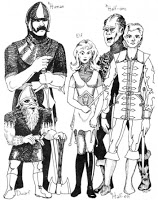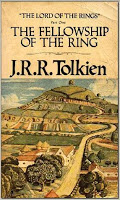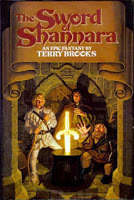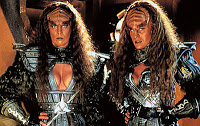One of the things that has been commonplace within fantasy RPGs since their inception is the roster of “standard” fantasy races available as player character choices. Aside from humans, we have elves and dwarves, and often (but not as often as the others) gnomes and halflings. And of course half-orcs, which are much more D&D-specific and are not nearly as ubiquitous across different game systems.
Now, there are certainly exceptions to this rule. Skyrealms of Jorune famously (one might even say infamously) presented a fantasy world that was almost completely alien. Tekumel, too, veered consciously away from the “classic” milieu mold. Runequest has its ducks. There are many other such examples (and when done to consciously differentiate themselves from the standard, fall into the “our monsters are different” trope).
The inclusion of halflings aside, and despite Gygax’s protestations to the contrary, I firmly believe that the reason so many fantasy RPGs present elves and dwarves the way they do are the works of Tolkien. Nowhere in the vaunted swords & sorcery literature that makes up the bulk of Appendix N do we find characters of that ilk. Fafhrd and the Grey Mouser never stole a pouch of gems from an elf, Conan never did battle with a sturdy dwarven warrior, and both are conspicuously absent from the Dying Earth and Mars. The Lord of the Rings seems to stand out, in fact, among the works listed in Appendix N, as something of a different type from its fellows.
Indeed, Tolkien’s elves and dwarves do more than make an impression by their presence; their very nature harkens back to his work directly, which itself takes its inspiration from Norse and Anglo-Saxon mythology. The elves of Victorian myth were diminutive fairies only half in our material world. Dwarves were good for little more than hording gold and perhaps clever craft-work. Tolkien hearkened back to pre-Christian mythology and envisioned multiple, physical, races living alongside humans. And that basic model, more than the specifics of the races themselves, are the long shadow that is cast across most RPGs today.
It’s very possible that other authors had created works that similarly featured many races of creatures living side-by-side with men prior to Tolkien. But it was Tolkien, transmitted through Gygax, who influenced the RPGs of today. Plus, the humans-elves-dwarves-(halflings) formula was repeated endlessly in fantasy literature after the Lord of the Rings caught on, much to the chagrin of those who preferred human-centric swords & sorcery fiction. So if a particular RPG author was influenced by, say, the Shannara books, he was still indirectly influenced by Tolkien.
That said, it brings up another question. If those are the “standard” fantasy races of today, why do we not see any sort of similarly “standard” science fiction races? Precisely because there was no single work whose influence was so ubiquitous. There’s Star Trek, and Vulcans and Klingons (or their analogues) are probably the closest thing we have to such, but the Kzinti of Lary Niven’s Known Space novels are also pretty widespread (and themselves can harken back to Flash Gordon’s Lion-Men). Without the sort of singular lingua franca with which all or almost all science fiction fans were conversant, in the way that all or almost all fantasy fans were conversant (or at least familiar) with Tolkien, science fiction never produced “standard” races in that way.
———-
Please, if you haven’t done so already, consider supporting my Kickstarter for the Adventures Dark and Deep Players Manual, going on now through December 19th. I need your help to make it a reality!













All that said, and I agree with you, it's been my impression that D&D was very much pulp fiction (i.e., Howard, Leiber, Moorcock, etc.) gussied up in the set dressing of Tolkien.
And Vulcans and Klingons are just Elves and Dwarves (or maybe Orcs) anyway…
And of course the half-orcs come from Tolkien also
I am pretty certain that Gygax chief;y had Poul Anderson in mind when he reputed Tolkien as the only influence on elves and dwarves in D&D. There is a lot to be said for that, to be sure, but the popularity is Tolkien, as is obvious when we consider the context of the denials from Gygax.
If you think about it, there are some other writers who've left a deep imprint on fantasy lit and RPG gaming. H.P. Lovecraft gives us the Ghouls we know and loathe in D&D as well as Mi-Go, Deep Ones and a host of noxious beings that find their way into fantasy and sci-fi gaming pretty commonly.